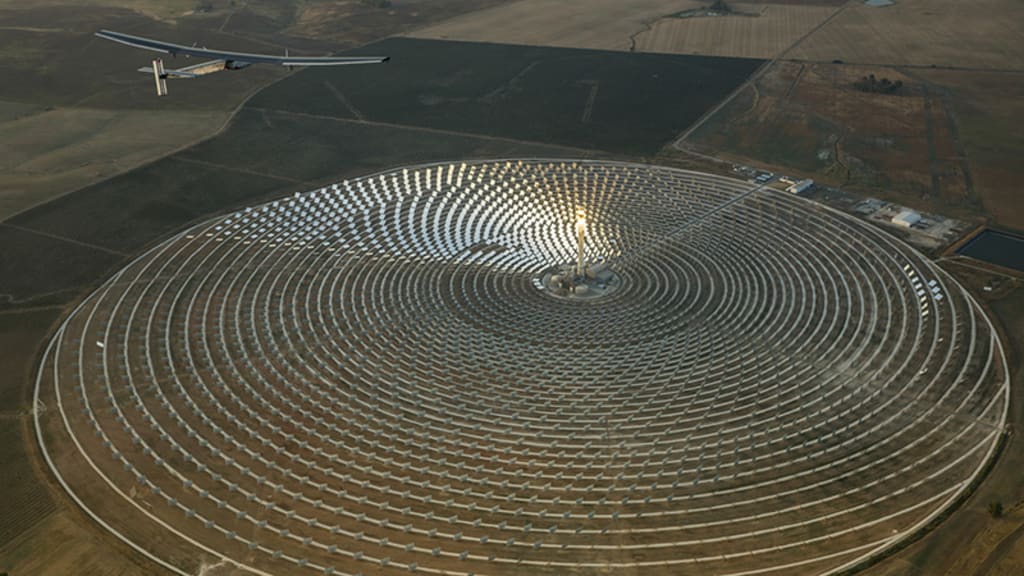Why don’t we cover the desert with solar panels?
Solar panels in the desert

1. The Sahara Desert experiences temperatures as high as 80° Celsius daily, covering an area of nine million square kilometers and receiving an immense amount of solar energy each year. The potential to utilize this energy by covering the desert with solar panels to solve global energy issues seems promising. Solar panels capture light particles, converting them into electricity by displacing electrons from their stable state. While there are limitations to their power generation capacity due to specific wavelengths of light they can interact with, advancements in technology have significantly improved their efficiency. With anti-reflective coatings and innovative designs, solar panels now operate at an efficiency rate ranging from 25% to 47%. Moreover, the cost of solar power has decreased by 89% in the last decade, making it the most economical source of electricity worldwide. Countries like India, China, Egypt, and the US have implemented large-scale solar farms in the desert, providing energy to numerous local communities. However, the high temperatures in these regions pose challenges, as excess heat can impact panel efficiency. Cooling systems are essential for these solar farms to maintain optimal performance.
Additionally, implementing solar panels in the Sahara Desert could potentially reduce the reliance on fossil fuels, decreasing greenhouse gas emissions and combating climate change. With the abundance of sunlight in this region, the possibilities for harnessing clean, renewable energy are endless. By taking advantage of this resource, not only would countries be able to meet their energy needs, but they could also contribute to a more sustainable future for generations to come.
Furthermore, the installation of solar panels in the Sahara Desert could create job opportunities and stimulate economic growth in the region. The construction and maintenance of solar farms require a skilled workforce, providing employment opportunities for local communities and driving economic development. Additionally, the revenue generated from selling excess energy could be reinvested into the local infrastructure, education, and healthcare systems, improving the overall quality of life for residents.
In conclusion, the Sahara Desert presents a unique opportunity for harnessing solar energy on a large scale. By overcoming challenges such as high temperatures and implementing innovative technologies, countries can unlock the full potential of this abundant resource. The transition to solar power not only offers a sustainable solution to global energy needs but also promises economic growth, job creation, and a cleaner environment for future generations.
Furthermore, the implementation of solar panels in the Sahara Desert would not only benefit the local region but also have global implications. Currently, many countries rely heavily on fossil fuels for their energy needs, leading to increased carbon emissions and exacerbating the effects of climate change. By shifting to renewable energy in the form of solar power, these countries can reduce their carbon footprint and contribute to the global effort to combat climate change.
Moreover, the Sahara Desert has the potential to become a major exporter of clean energy. With its vast expanse and abundant sunlight, it could produce an enormous amount of solar energy, surpassing the needs of the local region. This excess energy can be exported to neighboring countries or even sent across continents through interconnected power grids. This would not only diversify energy sources in these countries but also promote energy security and stability in the region.
Additionally, the implementation of solar panels in the Sahara Desert could serve as a catalyst for technological advancements in the field of renewable energy. The development of efficient and cost-effective solar panels, energy storage systems, and transmission infrastructure would be necessary to fully harness the potential of this resource. These advancements could then be applied to other regions with similar environmental conditions, further expanding the global adoption of solar energy.
In conclusion, the implementation of solar panels in the Sahara Desert has the potential to bring about numerous benefits on a local, regional, and global scale. From reducing greenhouse gas emissions to stimulating economic growth and promoting technological advancements, the Sahara Desert presents a unique opportunity to transition to a more sustainable and renewable energy future. By capitalizing on the abundant sunlight in this region, we can pave the way for a cleaner, greener, and brighter future for all.
About the Creator
Enjoyed the story? Support the Creator.
Subscribe for free to receive all their stories in your feed. You could also pledge your support or give them a one-off tip, letting them know you appreciate their work.





Comments (1)
There are a lot of possible technical problems. However, let's see positive!